Samuel Fuller | 1hr 30min

The primal horror at the core of White Dog does not come down to standard psychological questions of whether it is nature or nurture guiding the titular beast towards its most hateful, vicious instincts. There is absolutely no doubt to be had at all that it is a product of the abhorrent environment it was raised in, motivating it to attack Black people on sight. The truly terrifying question that Samuel Fuller poses is whether this conditioning ingrained in the dog’s mind from a young age can ever be overwritten, saving the animal from its own upbringing, and potentially many Black lives from its violent racial prejudice. To achieve such a feat as this would be a professional milestone for African American dog trainer Keys, though on an even broader level he recognises the social significance of the mission too. The exploitation and weaponisation of innocent creatures to do one’s malicious bidding is a perverse act against nature itself, soiling their pure white coats with bloodstains, and so to prove that such virulent racism is fully reversible would mark a victory in Keys’ small crusade for justice.
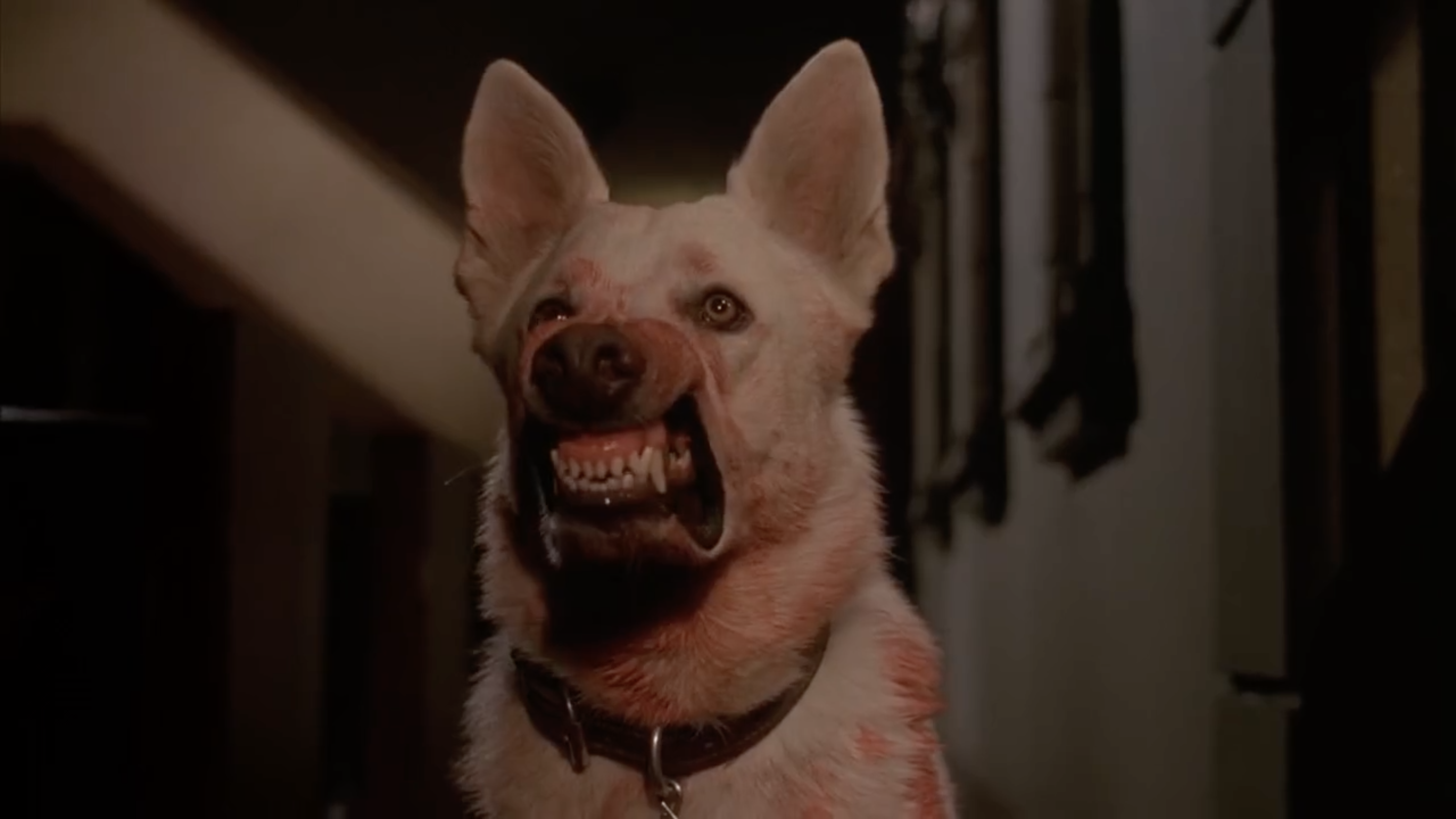
That Fuller deftly imbues this allegory for bigotry and indoctrination with all the tension of a pulpy horror film makes for an extraordinarily creative triumph too, framing the dog as a two-sided creature akin to Dr Jekyll and Mr Hyde. He draws this comparison directly in the dialogue, but it is also plainly evident in the suspense he builds around the dog’s behaviour, never quite letting us be sure whether we are about to get the loyal friend who lovingly gazes up at the camera with big, brown eyes, or the salivating beast ready to rip someone apart.
In the hands of a lesser director, White Dog could have very easily been a cheap melodrama falling back on stilted dialogue, and Fuller doesn’t entirely smooth over these flaws written into the screenplay either. Instead, he compensates for them by driving the film even deeper into thriller territory with his subjective camerawork, cutting between tight close-ups of Keys and the dog as a tenuous connection is forged between the two, and gradually closing the gap between black skin and white fur.
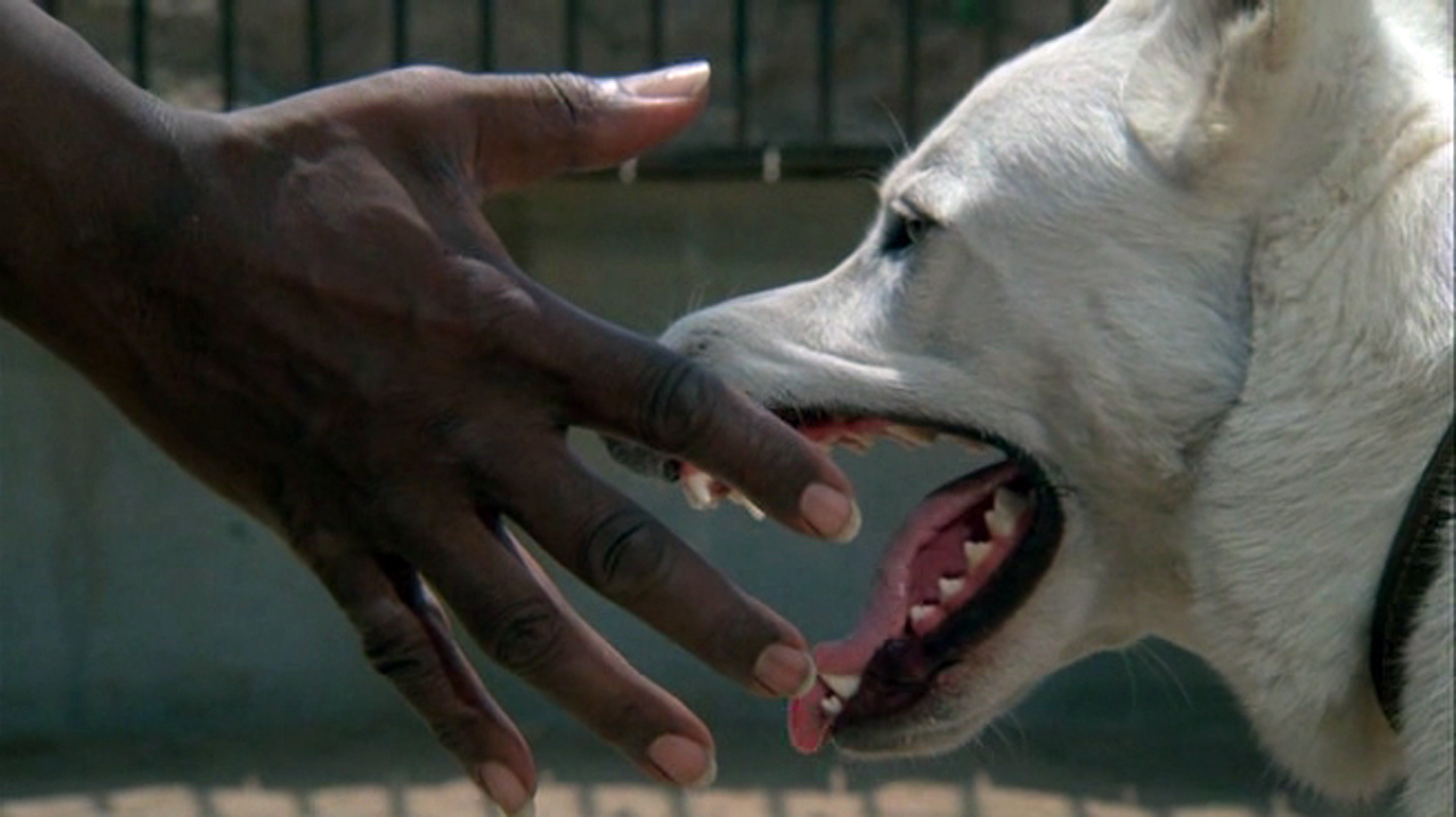
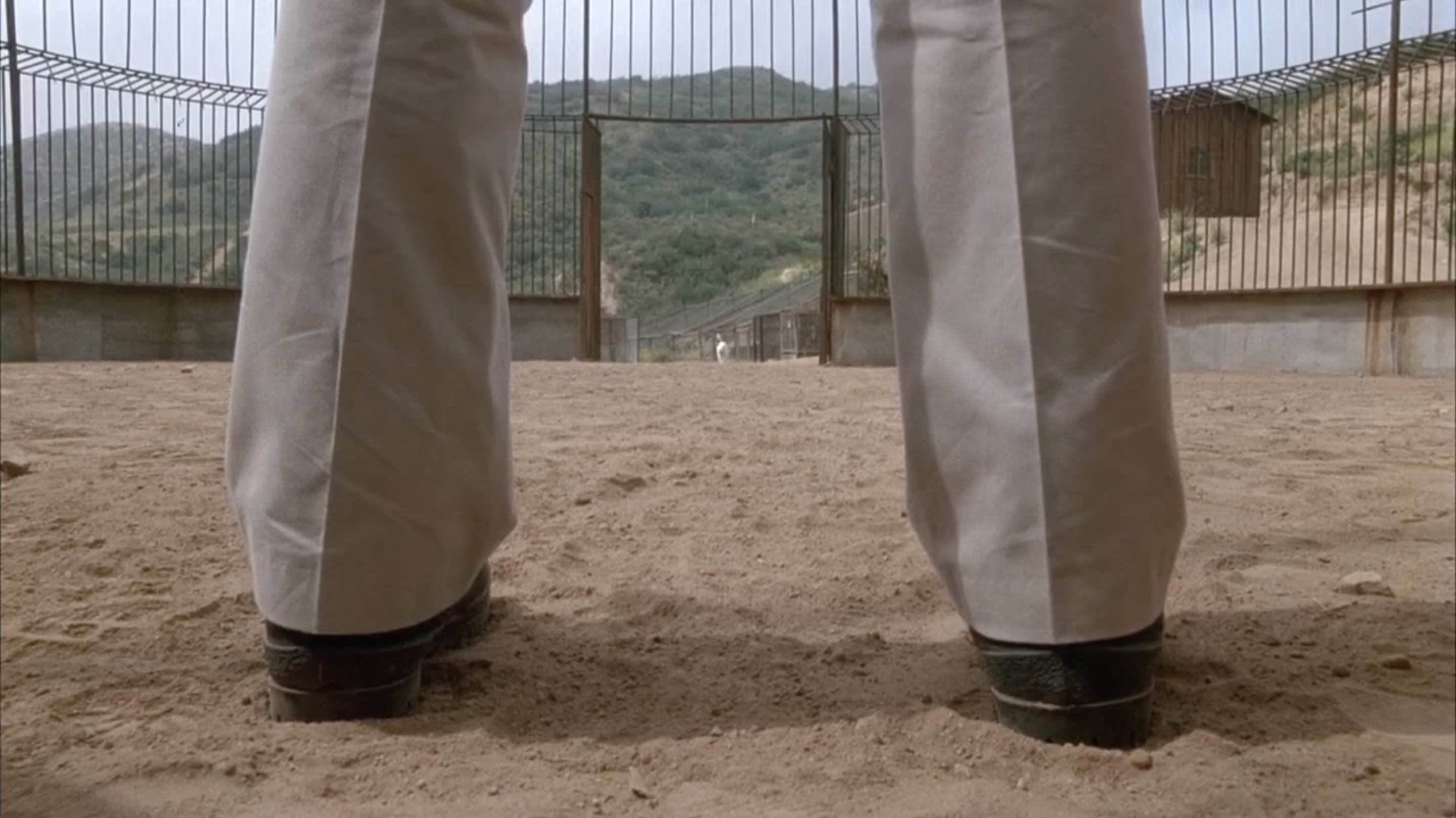
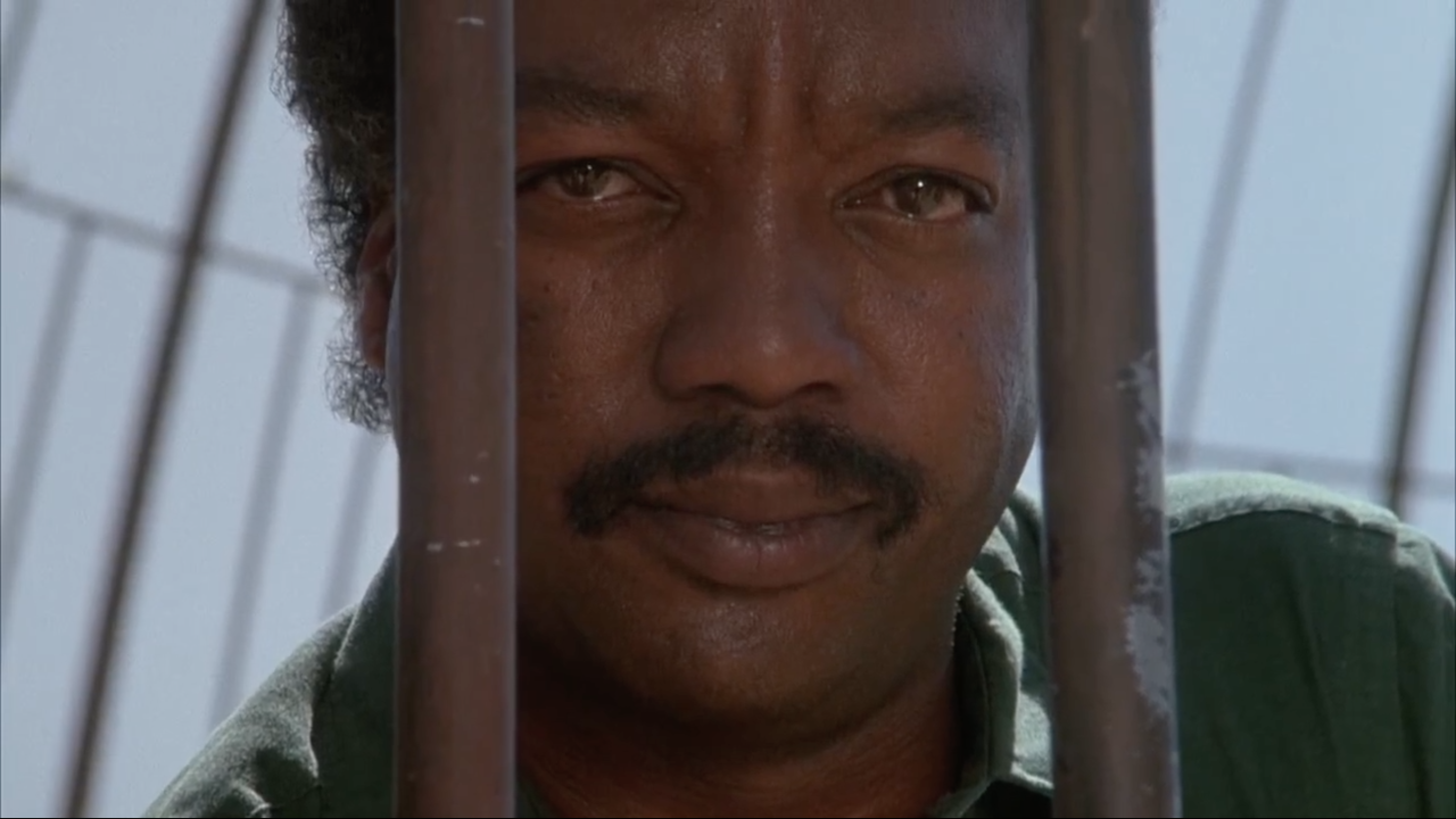
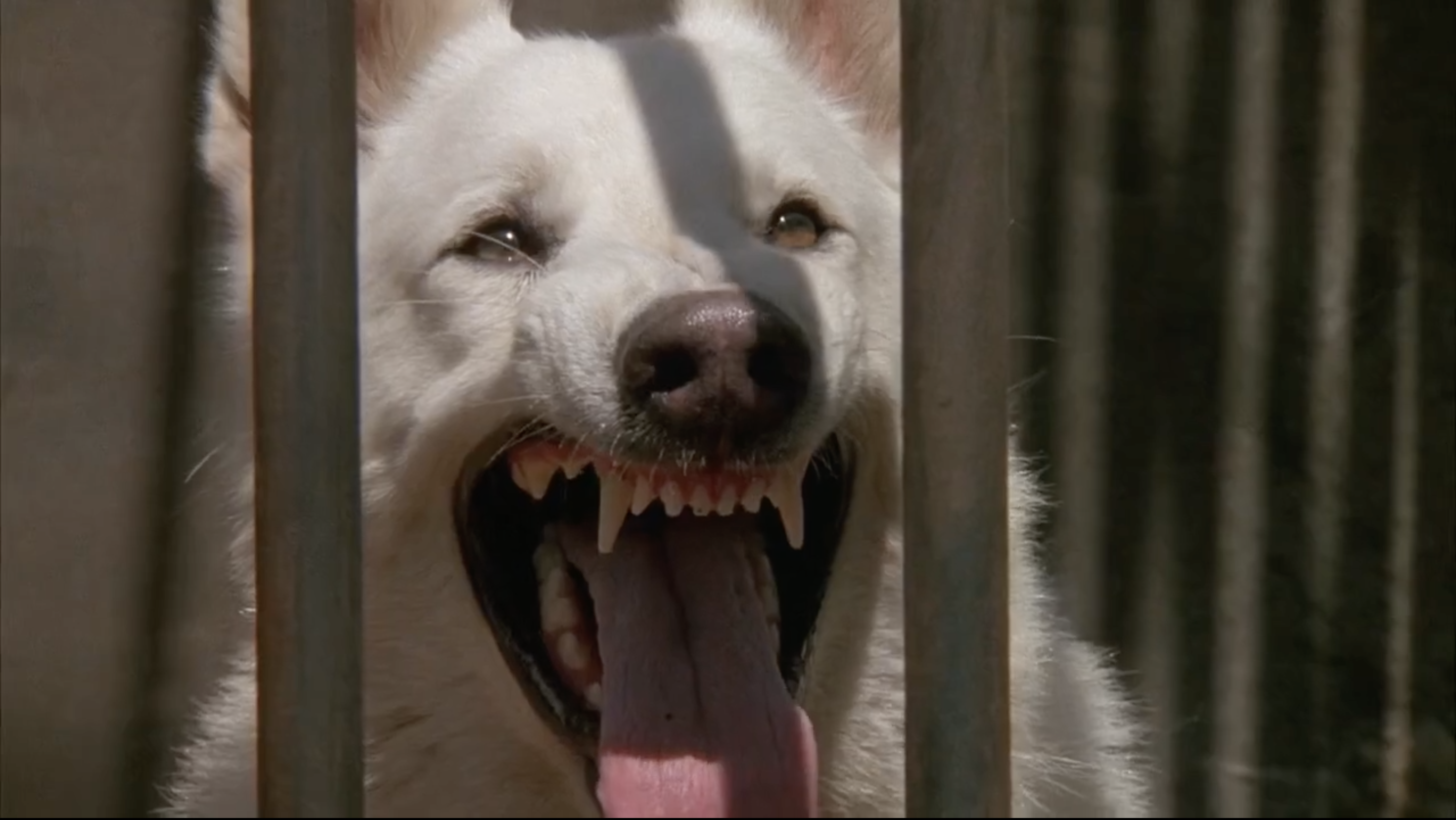
At the same time, Fuller is also wisely discerning in those moments where he pulls his camera back from the action altogether, sitting in a wide shot as the dog sniffs at a pile of garbage on a streetside, momentarily ignorant to the African American boy we see playing just around the corner. Later when it launches into a bloody attack inside a church, there is a morbid irony in the camera’s calm movement upwards to a stained-glass window where St Francis of Assissi stands in harmony with a canine companion. With camera placement as bitingly precise and anxiety-inducing as this, Alfred Hitchcock’s influence is overtly present in Fuller’s direction, only magnified by Ennio Morricone’s persistent flutes and strings score uneasily haunting the background.
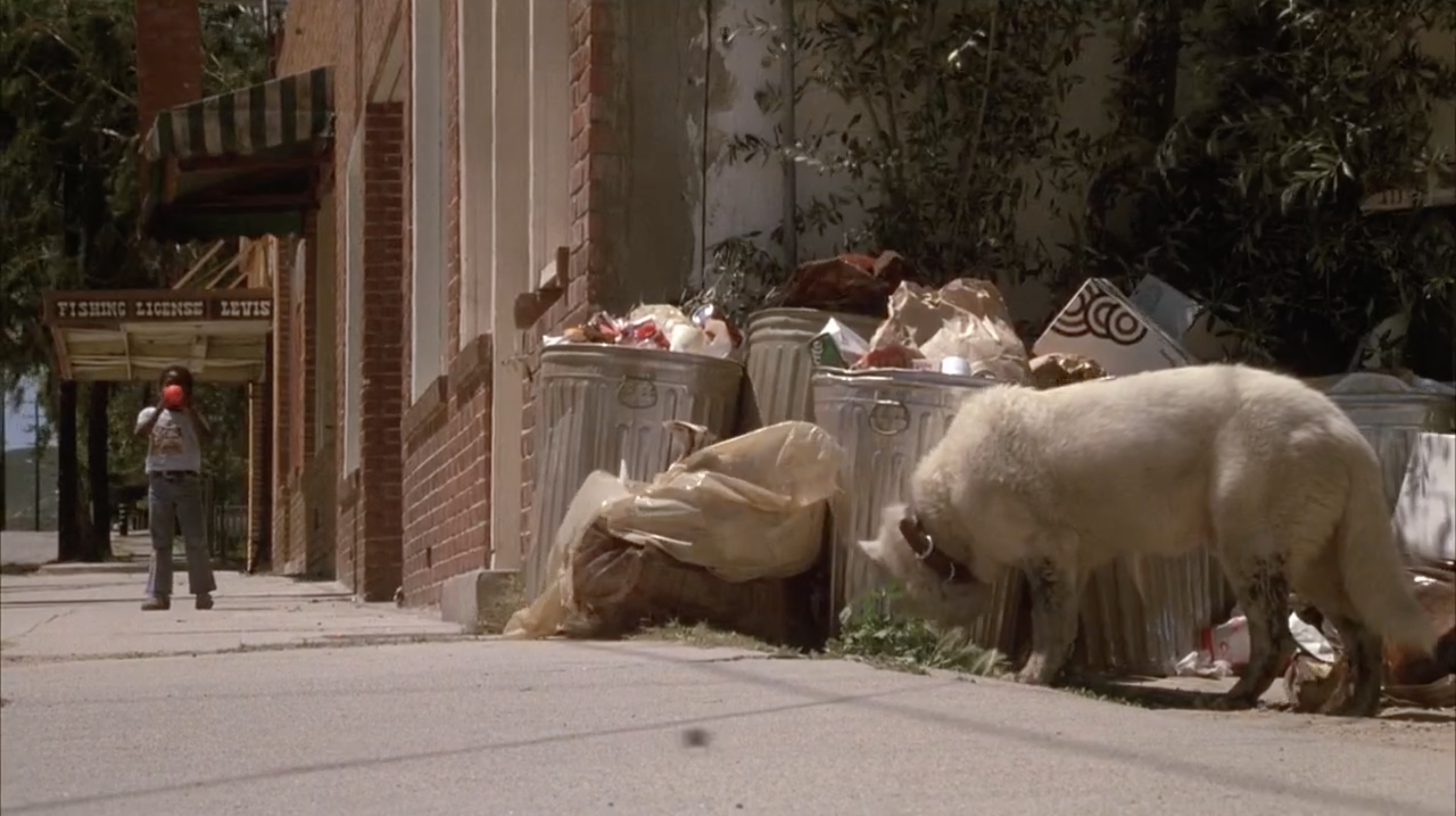
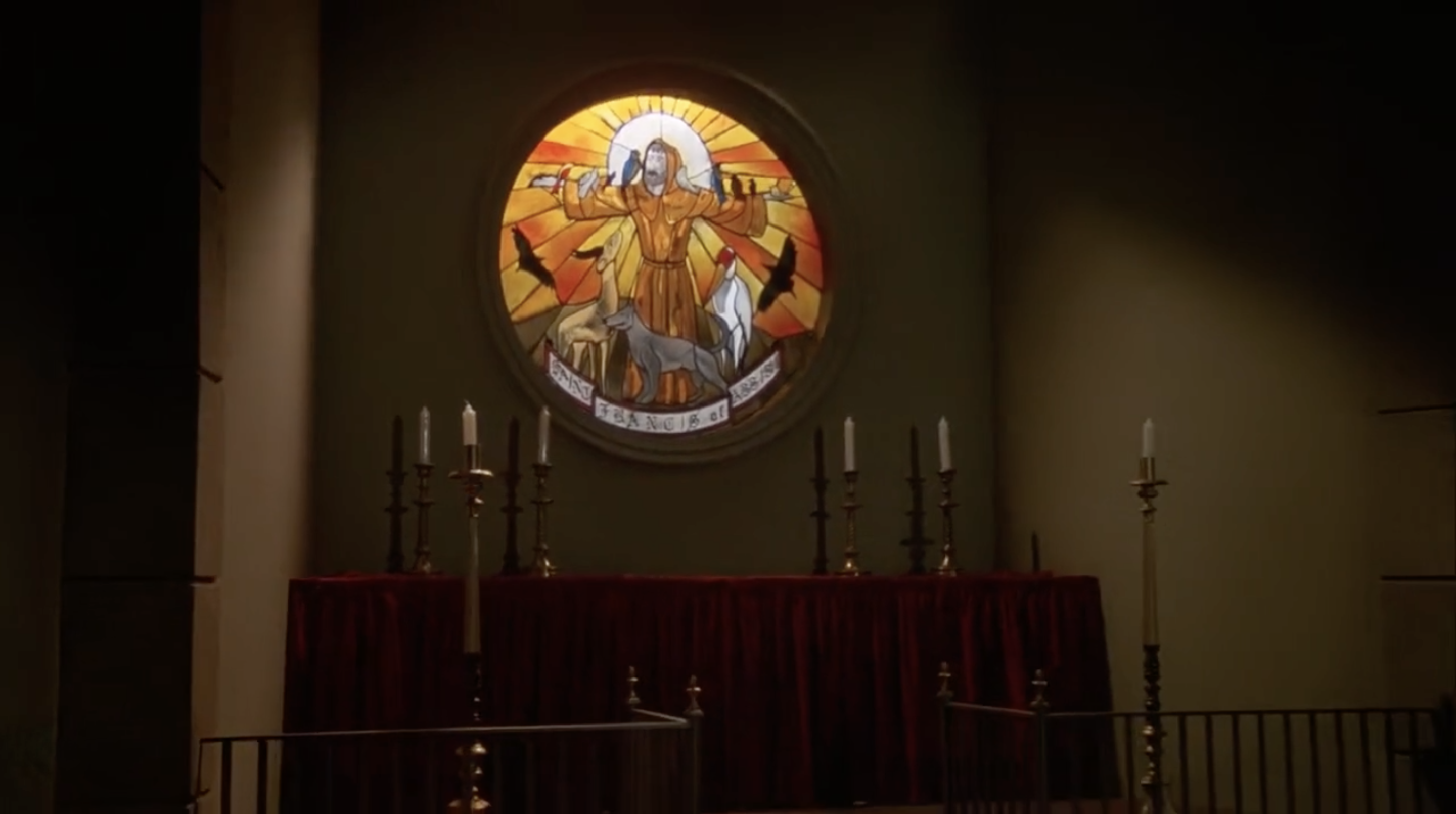
At the same time though, Fuller’s style is far from plain imitation. Perhaps White Dog’s most compelling visual choice is also its most distinguished, forcing us to helplessly watch in slow-motion terror as the German Shepherd bounds towards its victims, teeth bared and face pulled into a tight snarl. In each instance, time reaches an agonising crawl, finally building to a nail-biting climax within Keys’ giant cage that harshly wraps around them in the dog’s final test.
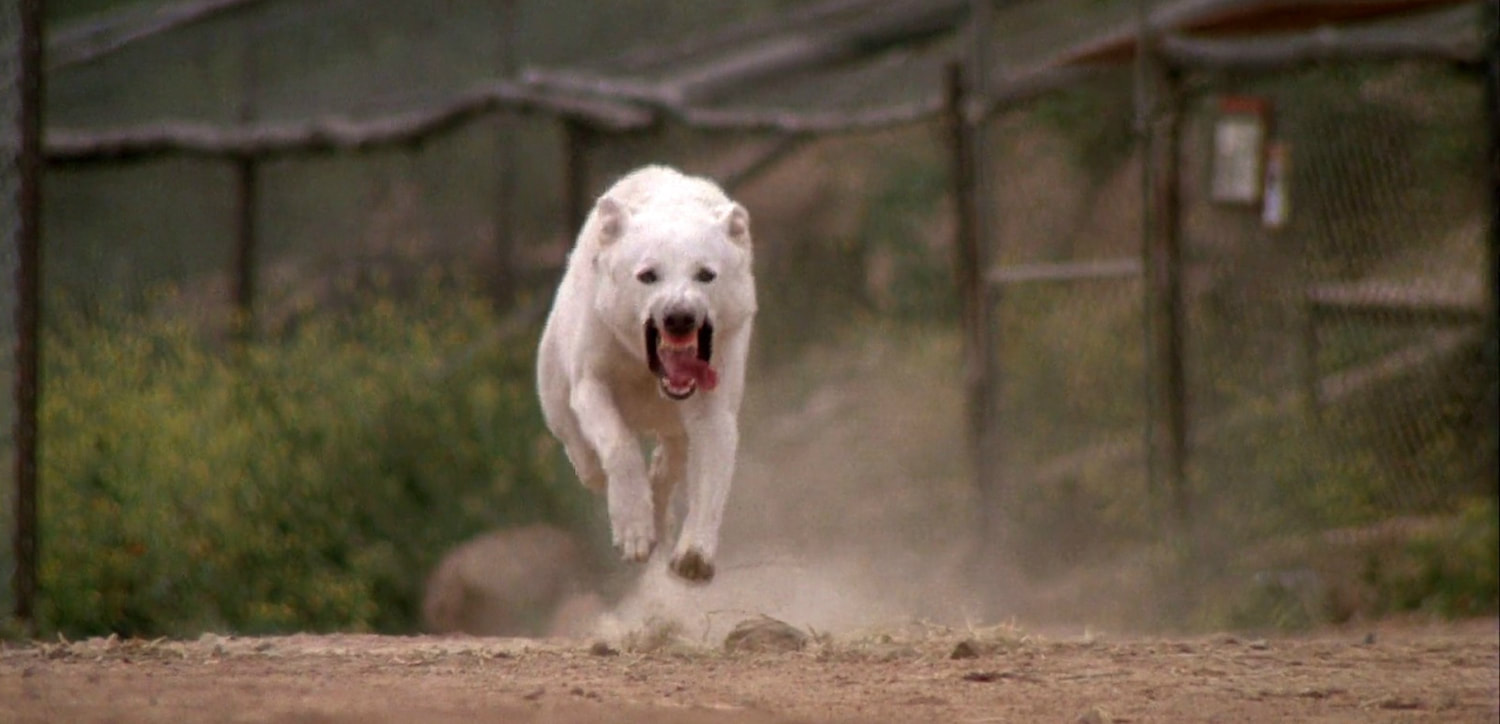
If the culmination of this scene doesn’t leave us defeated by the animal’s seemingly untreatable conditioning, then we are at least totally disturbed by the sudden appearance of Wilbur, the man who raised it and who now intends to take it back home. His warm, genial demeanour is at complete odds with our knowledge of his hidden cruelty, which sees him manipulate the course of nature to create killers in his own image. With two granddaughters by his side as well, Fuller hints very strongly at the chilling indoctrination likely going on behind closed doors, only with children in place of animals.
If we are to hold onto any hope and make a judgement based off the dog’s very last actions, then we might have reason to believe that one can indeed be cured of bigotry, paving the way for a far more compassionate and open-minded society. The deeply ingrained hatred which fuelled that prejudice, however, is a different beast altogether. In White Dog’s closing minutes, Fuller finally delivers one last twist of the knife, revealing the ugliness that lies at the sensitive root of the matter. This resentment bred by old prejudices does not necessarily seek racial violence to quench its bloodlust – it just seeks violence.
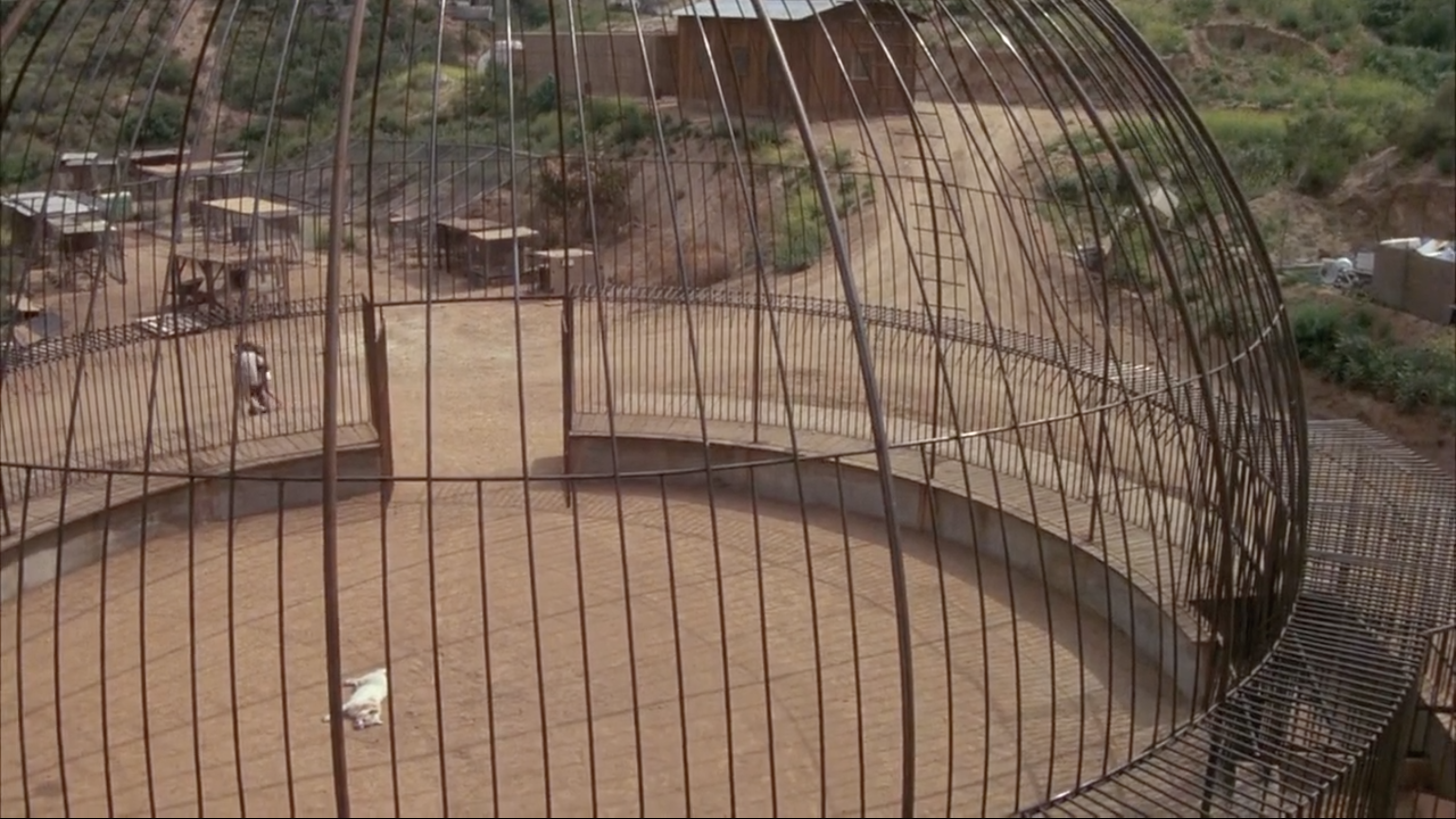
White Dog is currently available to rent or buy on Apple TV, YouTube, and Amazon Video.

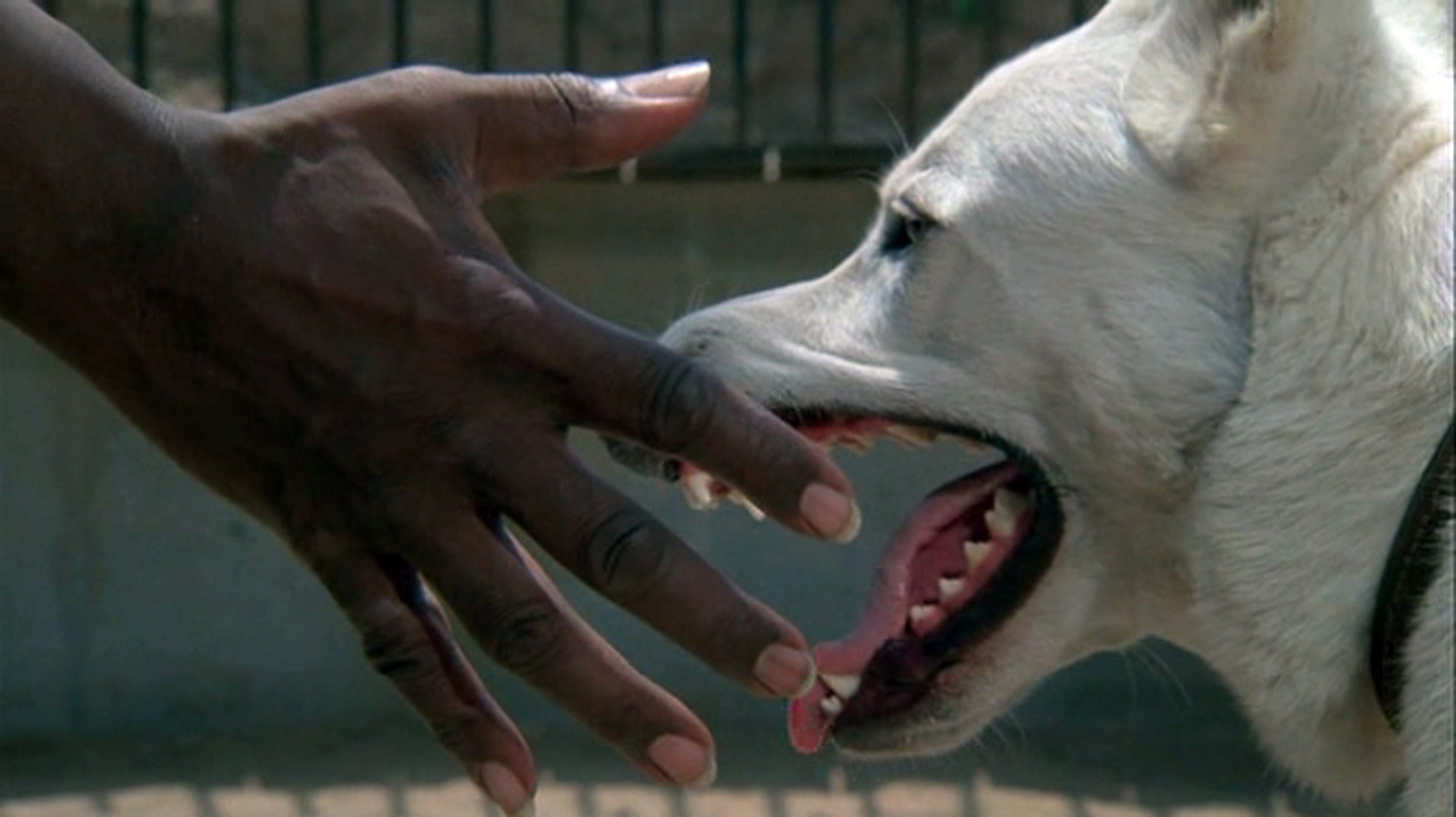
Why do you think the dog attacked Keys’s employer at the end of the movie?
Does it need to transfer its hatred to a new target, or does it see its old master in the employer?
I really like how perfectly ambiguous it, but I think primarily it is the dog seeing its old master in the employer. I think another reading though is that conditioned hate can’t be erased, but only mutated to shift it’s focus somewhere else, and therefore perpetuating that cycle of violence.